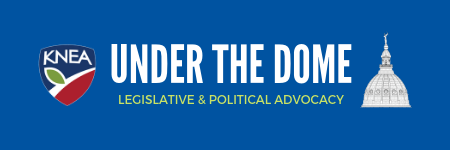The Joint Pensions Committee held its only scheduled interim committee meeting this week. The Interim Committee is a joint committee with both the Kansas House and Senate chambers assigning members to serve on the committee. Rep. Steven Johnson (R-Assaria) and Sen. Jeff Longbine (R-Emporia) co-chair the committee.
The key piece of the Kansas Public Employees Retirement System (KPERS) presentation centered around the 2018 KPERS valuation. The good news is that overall funding is on a good track. The overall system funding ratio is holding steady at 68%. It could have been better news had Wall Street performed better in December of 2018. The disheartening news is since the 2018 performance wasn’t as good as it could have been, it has pushed the expected year that KPERS will reach an 80% funding ratio to 2029 – three years later than was thought last year.
It is important to remember that KPERS is the pension system for all public education employees in Kansas. KPERS also covers state employees, county and city employees, various law enforcement agencies, fire fighters, and judges. If you work in the public school system in Kansas, you are a member of KPERS. As a participant of KPERS, you contribute 6% of your income into KPERS with every paycheck. Funding KPERS is not like funding federal Social Security. Social Security is funded as a “pay as you go” process. KPERS is a pre-funded pension system. Simply put, Social Security as a “pay as you go” system means that today’s workers pay Social Security taxes into the program and that money flows back out as monthly income to current retirees or their beneficiaries. KPERS is a pre-funded system which requires both the individual and the state to contribute to the fund. Those funds are then invested, and the proceeds of the investments and the contributions are secured so that the beneficiaries receive a defined benefit upon retirement.
KPERS is a pre-funded “defined benefit” plan. Defined-benefit plans or qualified-benefit plans are termed “defined benefit” because employees and employers know the formula for calculating retirement benefits ahead of time, and they use it to define and set the benefit paid out. The benefit a beneficiary receives from KPERS is based upon this formula:
Final Average Salary x Statutory Multiplier x Years of Service = Yearly Benefit ÷ 12 = Monthly Benefit
In the past, the state has not funded KPERS to the level necessary as determined by actuaries hired by KPERS to determine appropriate funding levels. KPERS has been underfunded by the state for the past 20+ years. In the last few legislative sessions, changes were made to improve funding for the system. The state’s contribution rate reached the actuarial required contribution rate in FY 2019, which is the first time this has occurred since FY 1997.
Again, the good news is that the overall funding is on a good track.
CLICK HERE for the full KPERS Valuation PowerPoint presentation.


